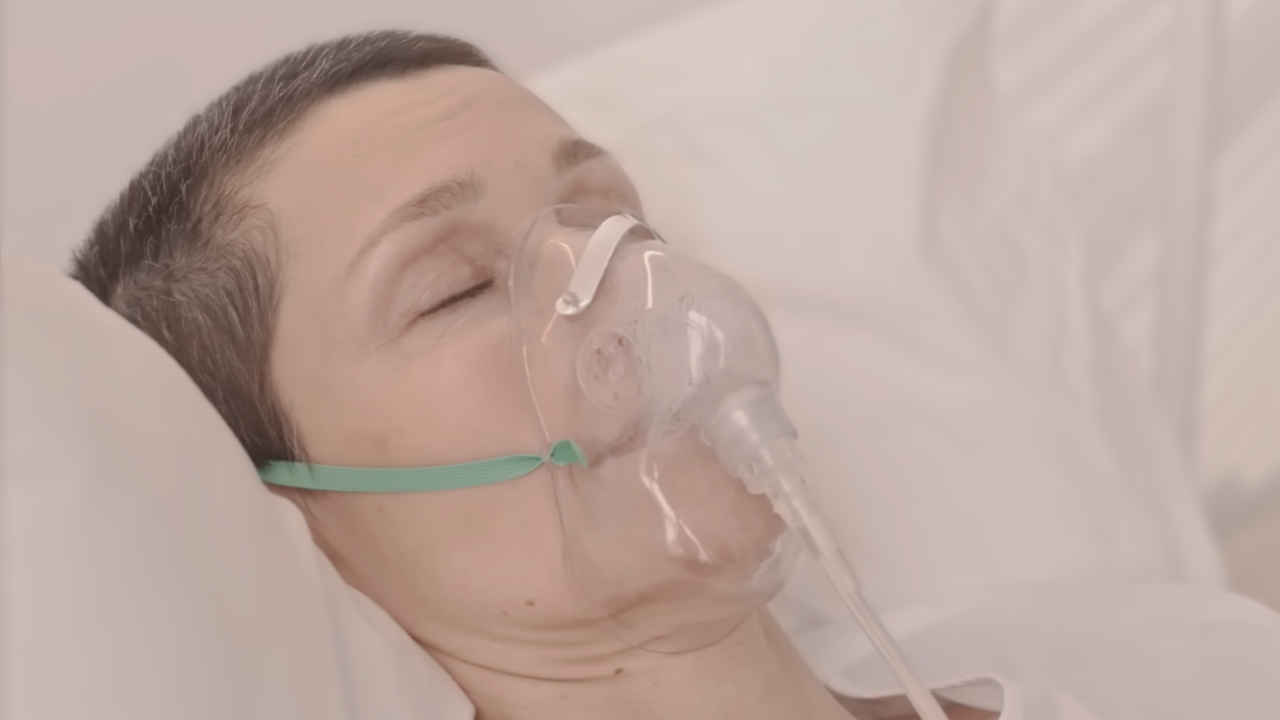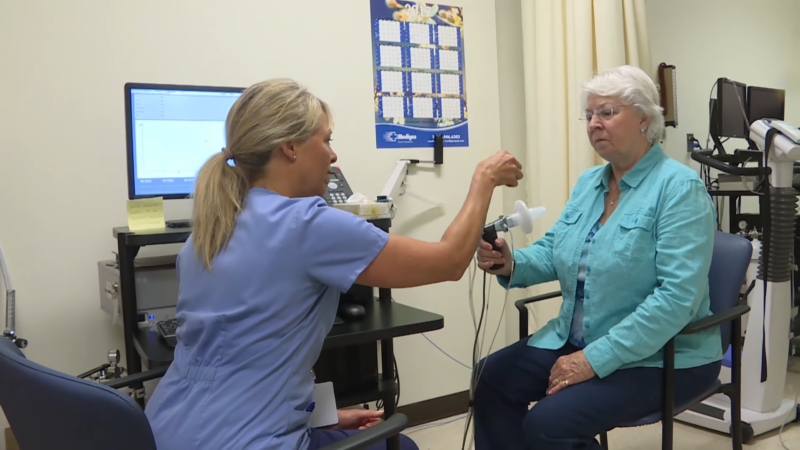Low oxygen levels in elderly adults can seriously affect their health and quality of life.
Chronic obstructive pulmonary disease (COPD) and pneumonia often lead to significant reductions in blood oxygen levels.
Heart conditions, including congenital heart defects and diseases, can also interfere with oxygen delivery.
Additionally, certain medications can slow breathing, causing oxygen drops during sleep (nocturnal hypoxemia).
It’s important to explore each of these factors in detail to address the issue effectively.
Table of Contents
Toggle1. Chronic Obstructive Pulmonary Disease (COPD)
It causes airflow blockage and breathing-related problems. Individuals with COPD experience difficulty exhaling air from their lungs, which leads to reduced oxygen levels in the blood.
Symptoms include chronic cough, mucus production, shortness of breath, and wheezing.
Smoking is the leading cause of COPD, and long-term exposure to irritating gases or particulate matter is also a significant risk factor.
COPD can be managed with medications, oxygen therapy, and lifestyle changes like quitting smoking and avoiding lung irritants.
2. Pneumonia
The air sacs may fill with fluid or pus, leading to symptoms such as cough with phlegm, fever, chills, and difficulty breathing. Pneumonia can be caused by bacteria, viruses, or fungi.
This condition is particularly dangerous for elderly adults due to their weakened immune systems and pre-existing health conditions.
Treatment typically includes antibiotics for bacterial pneumonia, antiviral medications for viral causes, and antifungal treatments for fungi-induced pneumonia.
Supportive care including plenty of fluids and rest is also critical for recovery.
3. Asthma
Symptoms include wheezing, shortness of breath, chest tightness, and coughing, which are exacerbated by triggers such as allergens, cold air, and stress.
In elderly adults, asthma can be more challenging to diagnose and manage due to overlapping symptoms with other respiratory conditions.
Treatment involves inhalers that deliver corticosteroids and bronchodilators to reduce inflammation and open the airways.
Identifying and avoiding asthma triggers is crucial for managing the condition effectively.
4. Heart Failure
Heart failure is a major condition impacting oxygen levels. When the heart weakens, it cannot pump blood effectively.
This leads to a reduction in the oxygen-rich blood that reaches the body’s tissues. Symptoms of heart failure include shortness of breath, fatigue, and swelling in the lower extremities.
Monitoring and improving heart function through medications or lifestyle changes can help manage these symptoms.
Healthcare providers often recommend medications such as beta-blockers and ACE inhibitors, as well as lifestyle changes like a low-sodium diet and regular exercise.
5. Arterial Blockages
These blockages restrict blood flow.
Plaque buildup within the arteries narrows them, limiting the passage of oxygenated blood.
Symptoms can include chest pain (angina) and claudication, which is pain in the legs due to reduced blood flow.
Treatment options include angioplasty to open blocked arteries and stents to keep them open. In some cases, bypass surgery might be necessary.
Preventative measures such as maintaining a healthy diet, regular physical activity, and avoiding smoking are essential in managing arterial health.
6. Iron Deficiency Anemia
Iron deficiency anemia occurs when the body lacks enough iron to produce hemoglobin, the protein in red blood cells that carries oxygen. In elderly adults, this can result from poor diet, chronic blood loss, or conditions that impair iron absorption, such as gastrointestinal disorders.
Symptoms may include fatigue, weakness, pale skin, and shortness of breath. Treatments often involve iron supplements and dietary changes to increase iron intake. In severe cases, blood transfusions may be necessary.
7. Hemolytic Anemia

Hemolytic anemia involves the rapid destruction of red blood cells, outpacing the body’s ability to produce new ones.
Causes range from autoimmune disorders to infections or reactions to certain medications.
Elderly adults with hemolytic anemia may experience jaundice, dark-colored urine, and an enlarged spleen.
Treatment focuses on addressing the underlying cause, which could involve immunosuppressive drugs, antibiotics, or even surgical removal of the spleen in severe cases.
8. Sedentary Lifestyle
Regular physical activity stimulates cardiovascular efficiency and enhances lung capacity, which helps maintain sufficient blood oxygen levels.
When elderly individuals remain inactive, their muscles and respiratory systems do not receive the necessary stimulus to function optimally.
As a result, limited physical activity can lead to decreased oxygen uptake and inefficient blood flow.
This can exacerbate conditions such as chronic obstructive pulmonary disease (COPD) and cardiovascular disease, which are already prevalent in older adults.
Encouraging daily activities such as walking, light stretching, or even engaging in hobbies that require movement can improve overall health. Regular exercise improves not only oxygenation but also mental health, mobility, and overall quality of life in elderly adults.
9. Smoking History

Smoking damages the alveoli, and the tiny air sacs in the lungs, reducing their ability to transfer oxygen into the bloodstream effectively.
Chronic smoking leads to lung conditions such as chronic bronchitis and emphysema, both of which contribute to hypoxemia. Even after quitting, the residual effects of smoking can persist, leading to compromised lung function and reduced oxygen levels.
Elderly adults with a smoking history should pay particular attention to respiratory health, undergoing regular check-ups and spirometry tests. Additionally, smoking cessation programs and pulmonary rehabilitation can aid in mitigating the long-term effects of smoking on the lungs and improving oxygenation.
10. Air Pollution
For elderly adults, exposure to high levels of pollutants like particulate matter (PM2.5), nitrogen dioxide (NO2), and sulfur dioxide (SO2) can reduce lung function. These pollutants can cause inflammation and constriction of airways, leading to decreased oxygen intake.
Prolonged exposure to polluted air can exacerbate conditions like chronic obstructive pulmonary disease (COPD) and asthma. Studies have shown that periods of high pollution are linked to increased hospital admissions for respiratory issues among the elderly. Using air purifiers indoors and reducing outdoor activities during high pollution days can help mitigate risks.
11. High Altitudes

For elderly adults, the reduced barometric pressure at higher elevations means that each breath contains less oxygen, which can lead to altitude sickness and exacerbate pre-existing heart and lung conditions.
Symptoms of altitude sickness include headaches, dizziness, and shortness of breath. These symptoms are especially pronounced in elderly adults due to already compromised respiratory or cardiovascular systems.
When traveling to or residing in high-altitude areas, it is crucial to acclimate slowly and consider using supplemental oxygen if necessary. Monitoring oxygen levels with a pulse oximeter can be practical for early intervention.
Related Posts:
- When Should You Be Concerned About Oxygen Levels in…
- Excessive Sleepiness in the Elderly - 7 Common…
- What Causes Hot Flashes in Seniors and the Elderly -…
- Why Elderly Adults Might Start Leaning to One Side
- What Causes Back Pain in Seniors – And Can It Be Prevented?
- 30 Most Common Nursing Home Problems and How to Address Them











